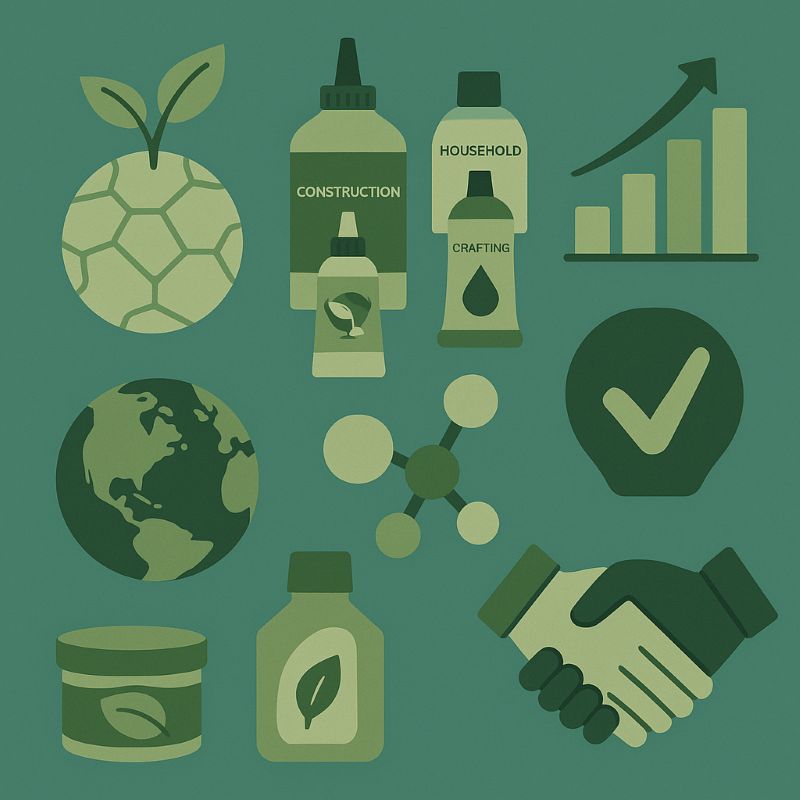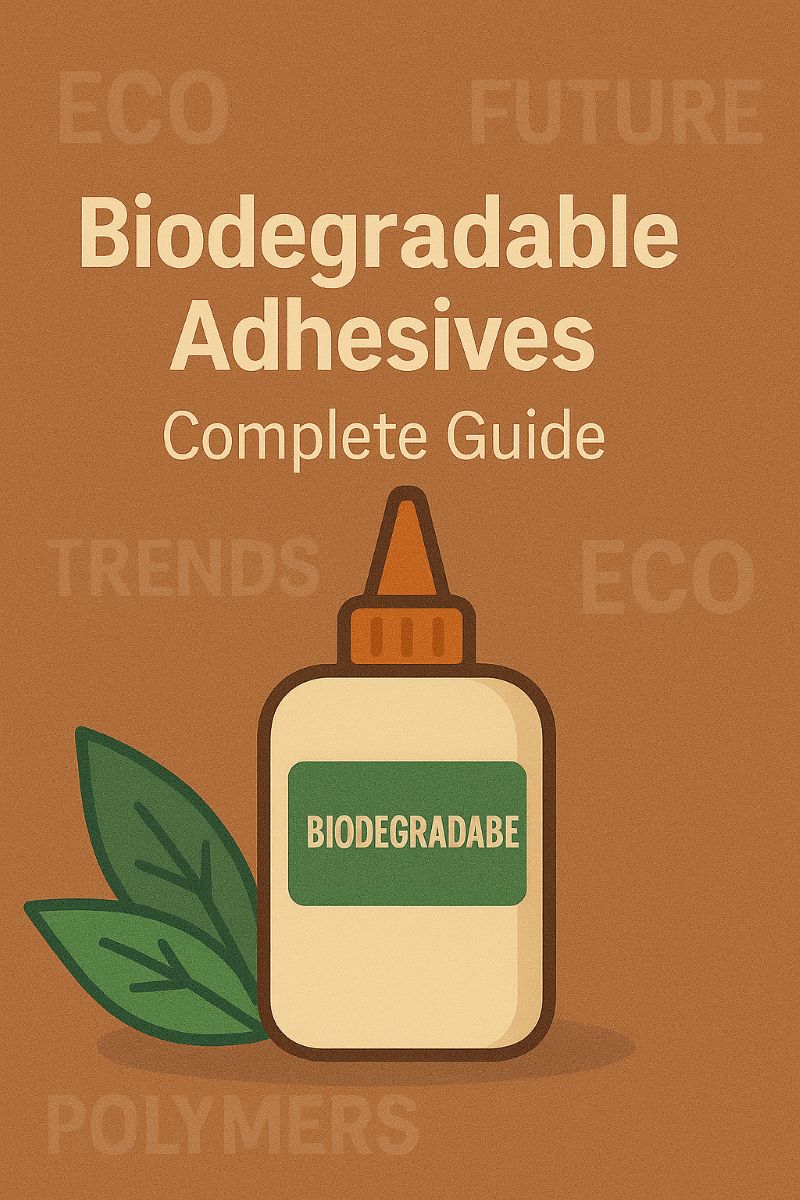
Understanding Biodegradable Polymers
Types of Biodegradable Adhesives
Importance of Eco-Friendly Adhesives
Methods for Creating Biodegradable Polymers
Latest Trends in Adhesive Technology
Strategies for Market Adoption
Future of Biodegradable Adhesives
Frequently Asked Questions (FAQ)
Biodegradable polymers are reshaping the adhesive industry by offering sustainable alternatives to synthetic materials. These polymers naturally degrade over time, contributing to a circular economy and reducing long-term waste. In adhesive applications, they provide an effective balance between functionality and environmental responsibility—paving the way for cleaner, greener bonding technologies across industries.
Biodegradable adhesives are available in several formulations tailored to different needs:
Construction-Grade Adhesives offer durable bonding with reduced environmental impact.
General-Purpose Adhesives are suitable for household use, offering reliable performance for everyday tasks.
Multi-Use Craft Adhesives are designed for low-strength applications like paper or lightweight materials.
Industrial-Strength Formulas focus on performance in demanding environments while maintaining compostability or biodegradability.
Each type serves a unique function, enabling industries to reduce ecological impact without compromising adhesive performance.

In the push for carbon reduction and sustainable product development, eco-friendly adhesives play a pivotal role. These formulations help brands meet environmental standards while supporting consumer demand for greener products. Whether used in packaging, construction, or consumer goods, biodegradable adhesives enable high-quality bonding with significantly less long-term environmental harm compared to conventional glues.
The creation of biodegradable polymers used in adhesives often relies on:
Bio-based feedstocks, such as starch, cellulose, or PLA (polylactic acid),
Fermentation techniques, which utilize microorganisms to produce polymers,
Enzymatic synthesis, which tailors polymer chains for specific degradation rates.
These methods ensure the adhesives degrade safely without leaving microplastics or toxic residues, supporting zero-waste initiatives.
Recent developments in adhesive technology prioritize:
Improved biodegradability through natural or compostable ingredients
Enhanced mechanical strength for industrial and commercial applications
Water resistance in eco-friendly formats
Integration with smart materials, such as adhesives that degrade on command or under specific conditions
This momentum is pushing biodegradable adhesives into mainstream industrial adoption across packaging, electronics, and textiles.
Adopting biodegradable adhesives on a large scale involves:
Raising awareness about the environmental and economic benefits
Demonstrating success stories through real-world case applications
Collaborating with eco-focused supply chain partners
Incentivizing early adopters with branding or tax advantages
Strategic alignment with environmental policies and consumer values will accelerate the widespread adoption of biodegradable adhesives across sectors.
The future of adhesives lies in materials that combine environmental performance with industrial strength. Advances in material science will enable:
Greater diversity in application-specific formulas
Cost parity with traditional adhesives
Integration into circular manufacturing systems
Support for industries like electronics and automotive where eco-adhesives are still emerging
Biodegradable adhesives are no longer a niche innovation—they're set to become a mainstream solution.
What are biodegradable polymers?
Biodegradable polymers are materials that naturally decompose over time, reducing environmental waste and pollution.
What types of biodegradable adhesives exist?
They range from construction-grade and industrial-strength formulations to household-use and craft adhesives made from bio-based materials.
Why are eco-friendly adhesives important?
They help reduce environmental damage and support sustainability goals without sacrificing performance.
How are biodegradable polymers made?
They're typically derived from renewable sources like starch or PLA and processed via fermentation or enzymatic reactions.
What are the current trends in eco-adhesive technology?
Trends include enhanced strength, moisture resistance, rapid degradation, and smart-release adhesives.
What strategies help promote market adoption?
Education, real-use case demonstrations, supply chain partnerships, and financial or branding incentives all play key roles.
What is the future of biodegradable adhesives?
The future includes expanded use across industries, improved cost-efficiency, and tighter integration with circular production systems.
How do they compare with conventional adhesives?
They perform similarly in many applications but have the added advantage of biodegradability and lower environmental impact.